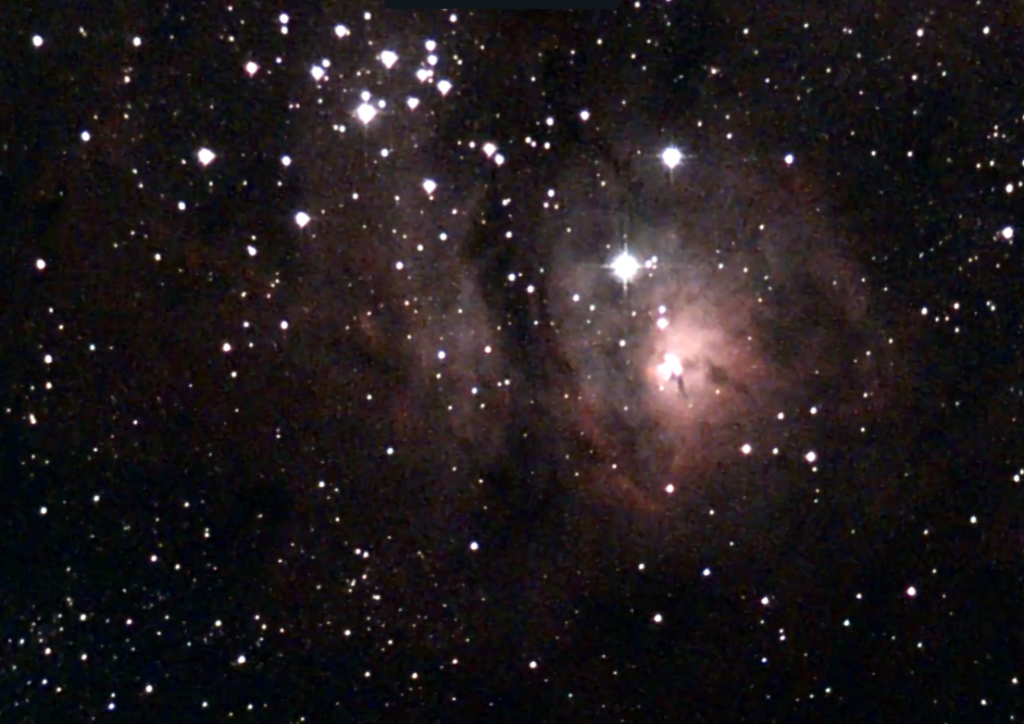M8 | NGC 6530 | Lagoon Nebula | Sagittarius | 4,000 Light Years Away
Our Best Image

Messier 8, also known as the Lagoon Nebula, is a stunning emission nebula located in the constellation Sagittarius. Charles Messier added it to his catalog in 1764, and it is one of the brightest and most massive star-forming regions visible from Earth. Positioned approximately 4,100 light-years away, the Lagoon Nebula spans about 100 light-years in diameter and is characterized by a mix of dark lanes of dust, bright regions of ionized gas, and newly formed stars.
At the heart of the Lagoon Nebula lies an open star cluster, designated NGC 6530, contributing to the nebula’s overall brilliance. This region is rich in stellar nurseries, where gas and dust collapse under gravity to form new stars. The intense radiation from these young, massive stars ionizes the surrounding hydrogen gas, causing it to emit the characteristic red glow seen in the nebula. Messier 8’s intricate features, including the prominent “lagoon” shape, make it a popular target for astronomers and astrophotographers, providing a fascinating window into the ongoing processes of star formation within our galaxy.
Observations of the Lagoon Nebula are conducted across various wavelengths, from visible light to infrared and radio waves, to study different aspects of its structure and the embedded stellar population. The study of Messier 8 enhances our understanding of the conditions and mechanisms involved in the birth of stars, as well as the dynamic interplay between the newly formed stars and the surrounding interstellar material. The Lagoon Nebula stands as a testament to the cosmic beauty of star formation, inviting astronomers to explore the intricate details of the stellar nursery nestled within the heart of our Milky Way.

